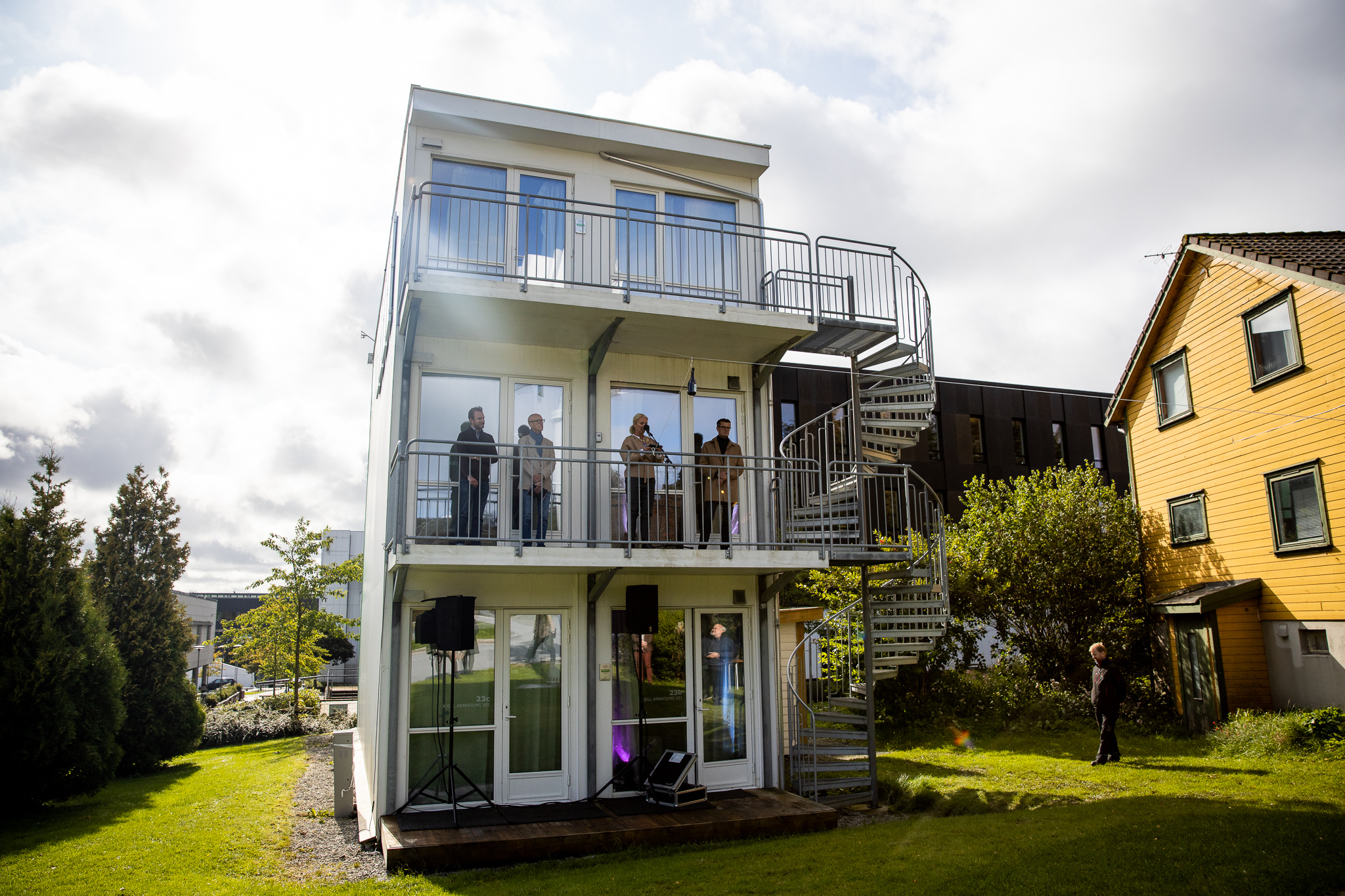Spring of 2019, a wind turbine was lifted into place and installed on the Ullandhaug campus. Solar cells have already been installed. The turbine and solar cells are part of a laboratory that will produce energy from solar and wind. Students, researchers and the business community can study the energy mix produced at the lab.
The selected wind turbine is a vertically axled wind turbine specially designed for urban areas. It is part of an energy laboratory for the production of renewable energy from solar and wind, with batteries that store electricity. Solar panel is already installed. The unique MyBox house on campus, which is made up of six shipping containers stacked on top of each other, is powered by Smart Energy Living Lab.
The energy lab was initiated by Siri Kalvig and Helleik Syse from the research network for environmentally friendly energy. Harald Røstvik, professor of urban planning and sustainable buildings at UiS, has been central in the development of the project. Lyse is also an important supporter and has contributed solar cells and a battery to the lab.
The lab is also included as a pilot in the UiS project Future Energy Hub which aims to create greener buildings and neighborhoods.
Doctors on wind and sun
Two doctoral fellows are closely linked to the project. One is Trond-Ola Hågbo, who researches urban wind. He will, among other things, simulate and measure the wind conditions around the wind turbine.
– We will develop better models for wind flow in urban areas. The fact that we have a wind turbine on campus in addition to advanced wind measuring equipment means that we can calibrate our models and ensure that they correspond to reality. The wind turbine design is also special and was chosen to minimize noise and to be able to utilize the turbulent wind in the area, says Hågbo.
The other fellow, Hassan Gholami, works on solar energy. He thinks the MyBox house is a good pilot to start with.
– Solar cells are located on the façade facing east, as well as on the roof to the south, and on the west wall. This means that you get good production morning and evening, the times when most electricity is used. Building-integrated solar cells are in their infancy, but they represent a huge energy resource worldwide, says Gholami.

The interplay between different energy resources
– What makes this energy lab extra interesting is that we can look at the interaction between wind and sun. In Norway, we have relatively low energy production from solar cells in the months when electricity consumption is highest. The combination of solar cells and wind turbine will ensure a more even energy production throughout the year, says Harald Røstvik, who is a pioneer in solar energy.
The goal is for the solar cells and the wind turbine to deliver a significant part of the electricity consumption to the apartments, where researchers working at UiS currently live. The energy consumption in the apartments must also be measured so that energy consumption can be optimized.
A plus customer agreement has been entered into so that if the production of energy is higher than consumption, the profit can be delivered to the electricity grid.
– What is just as important as the energy that is produced is the data we collect. This will lay the foundation for a number of exciting student assignments, research projects and collaborative projects with industry and the public sector, says Røstvik.
Students want to work with renewable energy
Helleik Syse, who is project manager for the energy lab, points out that the student survey for 2019 showed that renewable energy is the industry that attracts the most Norwegian students, and as many as 73 percent of technology students will work to restructure Norway.
– UiS offers several studies that give students the skills they can use to restructure the industry to become more environmentally friendly. For those who are most interested in the social sciences, there is a master's degree in Energy, Environment and Society. For the technologists, you can take a master's degree in urban planning or a master's degree in constructions and materials with a specialization in renewable energy, explains Syse, who also highlights studies in electrical, data and economics as particularly relevant with regard to restructuring.
Text: Karen Anne Okstad
Photo: Mari Løvås
Video: Screen Story